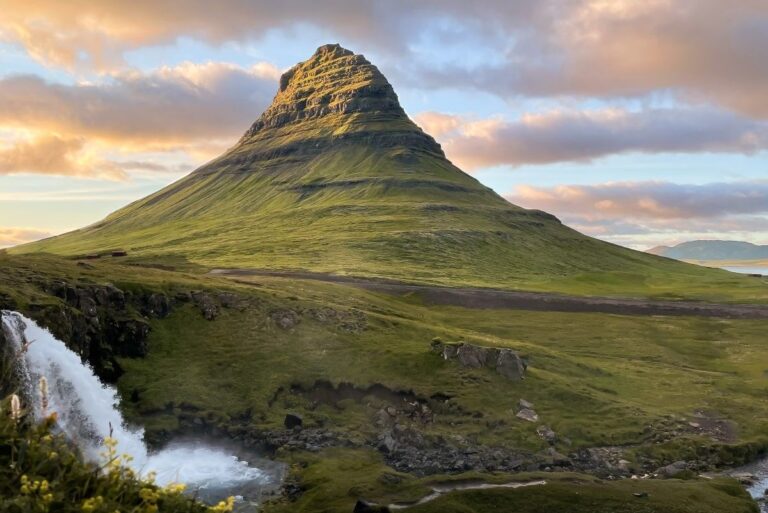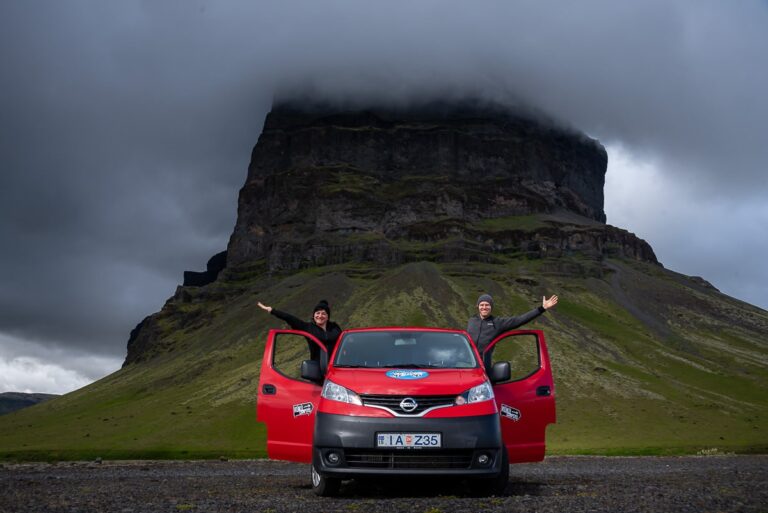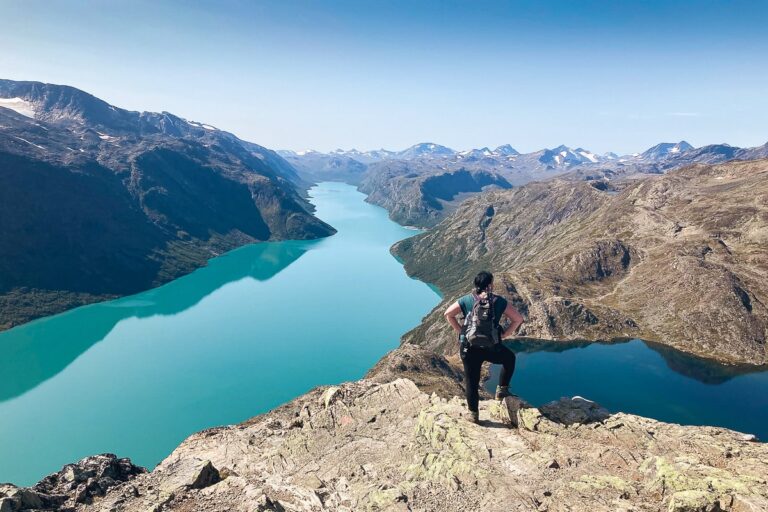If you need to choose one country in Europe that you should visit with a campervan, then choose Norway. With its fjords, glaciers, magnificent hikes and wonderful landscapes, Norway is highly ranked on many bucket lists and travelling with a campervan in Norway only adds to the experience! In this blogpost, we’ll give our best advice and tips regarding campervanning in Norway. So buckle up and enjoy the ride!
Some of the links on this blog are affiliate links. This means if you click on a link and purchase, we receive a small commission at no additional cost to you. The affiliate links concern only products and services we appreciated highly and trust. This means the views and opinions expressed in this post are purely our own. For more information, read our privacy and cookie policy.
Table of Contents
Overnight camping in Norway
Off-grid camping
One of the best things about Norway is that they are very welcoming to travelers with a campervan. If you enjoy staying off-grid with your campervan, Norway is your paradise! A Norwegian law (allemannsrett) states that everyone should be able to enjoy nature and allows to wild camp anywhere where the land is not owned, cultivated or where there is a prohibition sign. There are just a few rules to follow:
- Stay at least 150 m from houses
- Stay no longer than 2 days (48 hours) in one place without the permission of the land owner
- Don’t stay if there is a sign stating that overnight parking is not allowed
- Be vigilant about campfires in summer. Making a campfire in or nearby forests is not allowed from April 15th till September 15th
And of course, always practice the Leave No Trace principles.
Campsites in Norway
As other European countries, Norway has a good network of campsites. Norway itself is rather expensive, and as a consequence campsites’ rates are also high. During our time in Norway, we stayed only one night on a campsite, mainly to do laundry. Expect to pay extra for certain amenities like showers, laundry services, etc.
Finding a perfect camping spot
It’s not difficult to find a perfect camping spot for the night in Norway, but a little extra help never hurts. Download the app Park4Night for campsites, free camping spots and reviews.
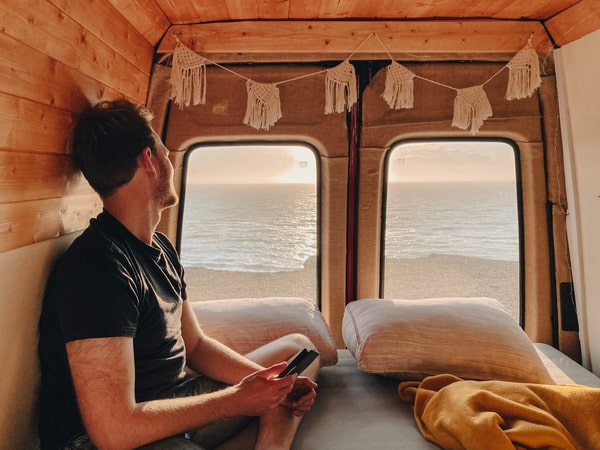
How to get to Norway with your own campervan
There are different ways to get your camper from ‘mainland’ Europe to Norway, but in all cases, you have to cross the water at some point.
Getting to Norway via bridges
If choosing this route, you will have to cross several bridges. The first one is Storebæltsbroen in Denmark, that takes you from Nyborg to Korsør. In fact there are two bridges, the first one is 6,6 kilometers and the other one is 6,8 kilometers. The bridge is a toll road. In 2022, the price for a camper (between 3-6 meters long and more than 2,70 meters high) is 250 DKK (€ 33,6) for a one-way ticket. Via the website of Storebæltsbroen, you can check the current price.
After this bridge, you have to cross Oresund bridge, from Copenhagen (Denmark) to Malmo (Sweden). In 2022, the price for crossing the Oresund bridge with a camper (between 3-6 meters long and more than 2,70 meters high) was € 110. Via the website of the Oresund bridge, you can check the current price.
This route has several advantages: This route gives you the opportunity to visit Copenhagen, you can admire the architecture of the bridges and you will get impressions of three different countries (Denmark, Sweden and Norway). The disadvantages are that you have to drive yourself (compared to taking a ferry) and once arriving in Sweden, you still have a long drive to Norway.
Getting to Norway via ferries
There are different ferry options to get to Norway and the most popular routes are from Frederikshavn (DK) to Oslo (NO) or from Hirtshals (DK) to Kristiansand, Larvik, Stavanger and Bergen. Taking a ferry has several advantages: The ferry takes you in no time to Norway. The ferry from Hirtshals to Kristiansand will take less than 3 hours. If you take the ferry to Bergen, you are in no time in the Western fjords of Norway. Another advantage is that you can already admire the fjords during the ferry trip and you have some free time to enjoy the services on the ferry. If you are leaving from Hirtshals, you have to drive to the North of Denmark, where there are lots of great things to see! Balancing the ferry against fuel and toll costs, this option is worth considering!
The most popular ferries are Fjord Line, DFDS and Color Line.
![]() CHECK PRICES AND BOOK
CHECK PRICES AND BOOK
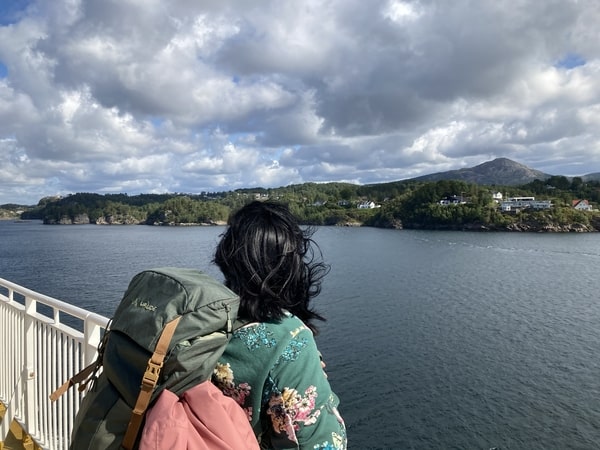
Renting a campervan in Norway
Maybe you don’t have a campervan (yet) or the distance from your home country to Norway would take up too much time. Then hiring a campervan is a valid alternative. There are some factors to consider: If you’re flying to Norway, then you will need to pick an airport near the area you want to explore. If you want to visit the North of the country, Tromso is a great starting point. For the south, Oslo or Bergen are good cities to start. The hire company then should have a base nearby the airport where you are arriving and you will need to plan how to get from the airport to the campervan.
What is the best time to go?
If you look at a map, you will see that Norway is at the northernmost end of Europe. It is often told that Norway is one of the coldest and most wet countries of Europe, but that highly depends on the region you are visiting.
Winter in Norway
Winter in Norway starts from October and ends early April. Expect lots of snow during winter (although main roads usually remain open) and note that is can get really, really cold during these months! A proper heater in your campervan is therefore a must! Also, keep in mind that during the winter months, the days are very short, so you will have only a couple of hours a day to explore the country. Norway in winter? Expect harsh conditions, but the winter months are perfect if you visit Norway for winter sports of for seeing the Northern Lights.
Summer in Norway
Mid-April to October are the summer months in Norway, with July and August being the warmest months. The further north you go, the longer the days are. Although during the summer months, temperatures are agreeable, don’t forget that it is possible to experience four seasons in one day in Norway. So, be well-prepared for all types of weather.
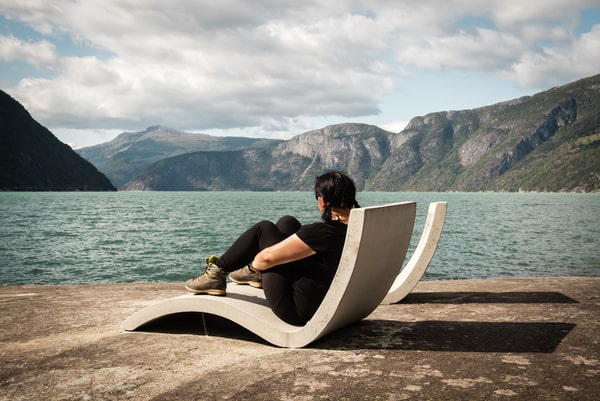
Driving in Norway
All the roads in Norway are well-maintained and Norwegian drivers are polite. Overall, the roads are not too busy, but expect more traffic on more popular routes. The only problem is that it always takes longer than estimated to reach your destination. So don’t underestimate how time-consuming it will be to travel in Norway and plan ahead, to make sure you’ll be able to visit the places you have in mind. Some roads are narrow, so always drive with caution. During downhill stretches, brakes may overheat. Apply mountain driving skills and drive in a low gear.

What documents do you need?
If you have a driving license that is issued in a EU/EEA country, you can use it in Norway for as long as it is valid. Driving licenses from most countries outside the EU/EEA can be used in Norway for up to three months.
The most important driving rules of Norway
Don’t drink and drive – Alcohol laws in Norway are very strict and the penalties for drinking and driving are severe. The legal limit is 0,02%.
Mobile phone use – Using your mobile phone hand-held whilst driving is an offence.
Seat belts – Seat belts are mandatory for the driver and all passengers.
Speed limits – The general speed limit in Norway is 80 km/h. On certain motorways it is allowed to drive 110 km/h. In town centers, the speed is limited to 50 (or even 30) km/h.
Lights on, always! – Dipped headlights are compulsory, always!
Tire requirements – As a driver, you have to be responsible that your tires are in good condition. Studded tires are allowed from 1 November until the first Sunday after Easter Sunday. Make sure that when you have studded tires, they are fitted to all four wheels. Vehicles with a permitted total weight of 3.5 ton or more must have snow chains with them if ice or snow is expected.
Tollways in Norway
Norway has a toll system to pay for the maintenance and construction of roads, bridges and tunnels. If you are on a major road, expect it to be a toll road. In contrary to e.g. the toll roads in France, in Norway, there are no gates where you can pay the toll. Below more information on how to register for the toll roads:
- You have to register your vehicle upfront via an Autopass authorised provider. Make sure you do this in time, so your electronic tag can arrive in the post. There are several companies/options where you can order the tag. We heard that Flyt is one of the most user-friendly options.
- If you choose not to have the tags (and discounts) you have to register with Epass24. The invoice will then be sent to you, based on the information you have registered. This option is recommended when you were not able to register your car before arriving in Norway.
- If you choose not to register, your vehicle will be identified via ANPR and you will receive an invoice in the post with an assumed class and emissions category, and a charge for not registering.
Ferries in Norway
For certain routes you will have to use a ferry to get from point A to point B. These ferries are easy to use. You pull up, you wait until a ferry employee will show you where to park your car. Sometimes, you have to pay on the ferry (card or cash), sometimes the invoice will be send to you afterwards.
Campervan services in Norway
As we mentioned before, Norway is an excellent country for travelling with your campervan or motorhome. One of the reasons is that service points are widespread and most of the time you can use these service points for free. Many petrol stations provide drinking water. To empty gray water and toilet cassettes, we recommend to look for service points on Park4Night. As there are plenty of service points, there is no reason at all to pollute nature, so again, please practice the Leave No Trace principles.
Best scenic drives in Norway
There are 18 scenic roads in Norway. These roads have in common that they run through beautiful scenery, have resting stops with some architectural masterpieces and are more enjoyable to drive compared to the main roads. We’ll not discuss the scenic roads separately, as all information is available on the website of scenic roads in Norway.
If you are looking for some excellent hiking, check our blogpost regarding hiking along the Ryfylke scenic route.
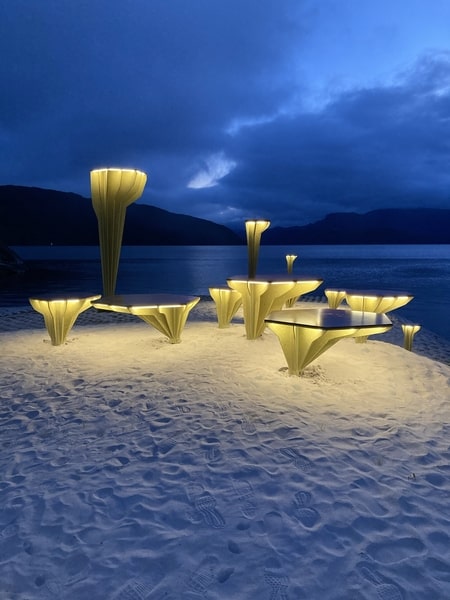
Other thing to know
- Laundromats are not widespread in Norway. During our stay in Norway, we had to stay one time on a campsite, mainly to be able to do the laundry. It was almost impossible to find laundromats in Norway.
- All Norwegians speak English to a certain level.
- Most grocery stores close on Sunday. So be prepared and shop on Saturdays
- Alcohol is expensive in Norway. It is possible to bring alcohol with you in Norway, but at the border, the allowance for alcohol is restricted to a certain quota :
- Spirits over 22% up to and including 60% – 1 liter
- Wine over 2,5% up to and including 22% – 1,5 liters
- Beer over 2,5% up to and including 4,7% – 2 liters
- In general, Norway is an expensive country. However, if you do groceries in affordable shops (e.g. KIWI) and are able to camp off-grid, you can really save on costs. The solar panel on our campervan made it possible for us to camp most of the time off-grid. If you don’t have a solar panel, a portable power station is a good alternative
Norway essentials
Here is an overview of the things we took with us to Norway or the things we missed during our trip in Norway
- Book Lonely Planet Norway – Not only is a Lonely Planet ideal to plan ahead, but it is also excellent for discovering hidden gems along the way. Definitely a must to have with you when travelling with a campervan in Norway.
- Drone Mavic Mini 2 – The landscapes in Norway are stunning. If you love photography or videography, a drone is a must-have in Norway. We didn’t had a drone yet when travelling in Norway and we did regret it. But now we have a drone, we have another good reason to travel back to Norway soon! And with this fly more combo, additional batteries are included, so your flight time is extended!
- Trekking poles – Hiking is a must-do in Norway, but keep in mind that you hike in rough terrain. Trekking poles are very useful during hikes, both on the way up as the way down.
- Inflatable SUP – There is water everywhere in Norway. And a great way to discover the fjords and lakes is by stand up paddling.
- Camelbak – To keep you well-hydrated during your hikes, we do recommend to take a camelbak with you!
- Jackery power station and solar panel – If your campervan does not has a solar panel, but you are keen on camping off-grid, a Jackery power station is a good solution. This rechargeable battery-powered generator is equipped with AC outlet, DC carport and USB charging ports, that will keep all your gear charged, from smartphones, laptops, mini coolers, electric grill, and so on!
- Biodegradable soap – Nature in Norway is stunning, and we should have respect for that. So if you are planning to shower in nature, always use a soap that is biodegradable!
We hope this post gives you all the information you were looking for. If you have any questions or suggestions, please let us know in the comments!
Happy travels!
Matthias and Mieke
Quick start your holiday with the help of our trusted tools
These are the websites we highly recommend to plan your next trip. We use them all the time to save money and travel freely! Did you know that by purchasing through our links, you support us at no additional cost. Thank you for your support. ♥️
Find hotels: via booking.com
Find a rental car: via discovercars.com
Find cheap flights: via skyscanner.com
Book tours & attractions: via getyourguide.com
Book a bus / train / transfer: via omio.com—
